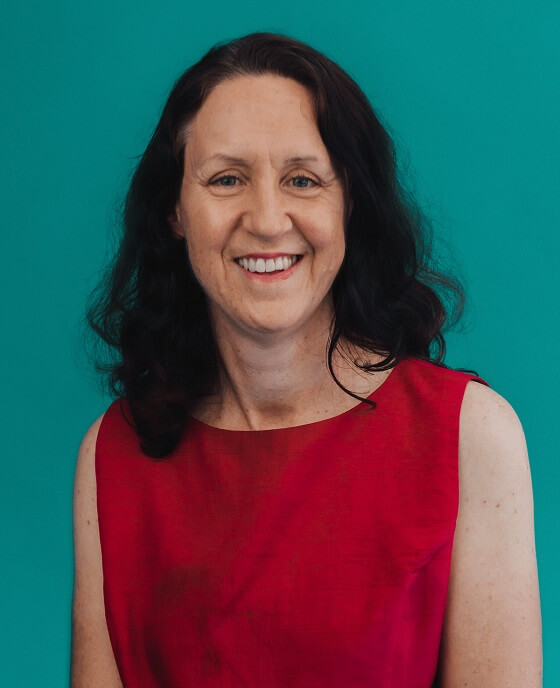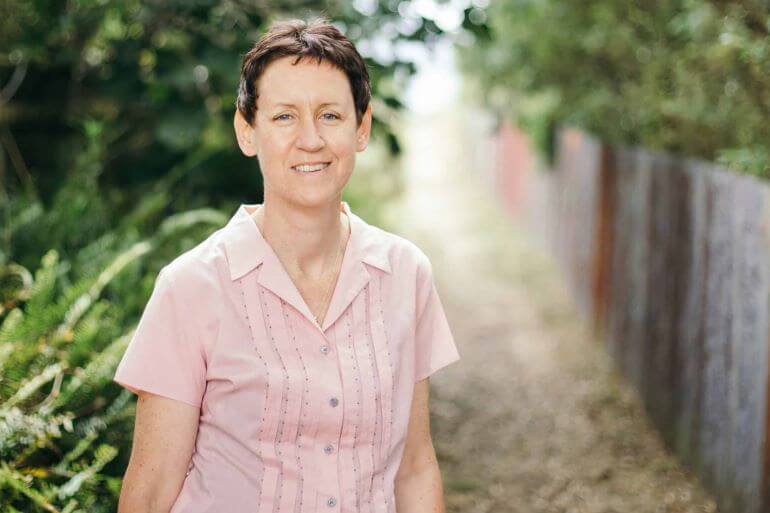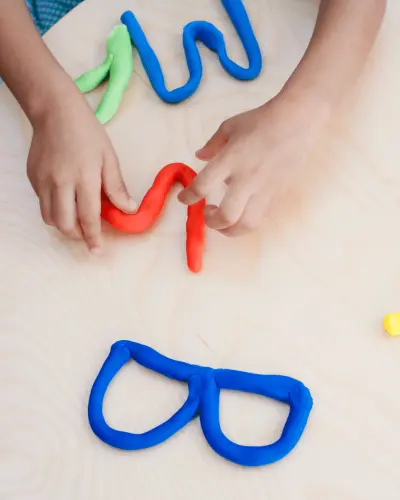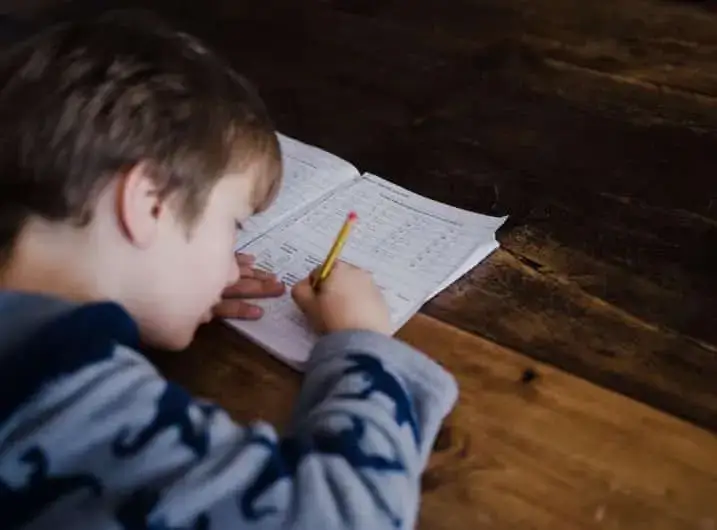
Dyslexia Education as an Access to a World of Belonging
Abstract
This article explores how dyslexia and related neurodiversities are often found at the heart of a significant number of people’s difficulties with learning, achievement of academic qualifications, and successful career attainment and progression. Consequent impacts on people’s participation and success in many aspects of life, including their sense of belonging, are considered. Opportunities for effectively remediating the negative impacts of dyslexia, together impacts of dyslexia, together with fostering the gifts and talents that come with such conditions, are explored. Possibilities for creating greater belonging and opportunities for contribution for people with neurodiverse brains through greater awareness and funding for remediation programs are discussed.

Introduction
In February 2020, I received my practicing certificate as a licensed Davis Dyslexia facilitator, allowing me to work with people of all ages who have learning difficulties as a function of their dyslexic or neurodivergent brains.I had achieved a long-held dream of acquiring the skills to make a profound difference through dyslexia education in the lives of people and their families who experience the daily challenges of dyslexia.”
During my 20-year career as an adult educator, I observed many people who struggled with dyslexia, for whom traditional remediation methods had not worked. During my Davis Dyslexia facilitator training, I confronted aspects of my own neurodiversity – dyspraxia and Attention Deficit Hyperactivity Disorder (ADHD) – and its impacts on my life, particularly my lack of physical coordination, awkward social interactions, and a lack of a sense of belonging.
Over the past three years, I have had the privilege of working with many highly intelligent, creative, and often profoundly challenged clients of all ages. I have become very interested in how effectively addressing the root causes of dyslexia and related neurodiversities can substantially contribute to better scholastic success, as well as increased competence, participation in, and enjoyment of, sports, everyday activities, and social relationships. I have also become very curious about how to have effective dyslexia education more widely available to people who are in greatest need.
Overview
Up to 20 percent – or one in five people are diagnosed with reading dyslexia. The actual prevalence of dyslexia is likely much higher. Professor Karen Waldie from the School of Psychology at Auckland University in New Zealand notes that many children with neurodiverse brains, especially girls, who more successful mask their issues, miss being diagnosed in school. They may only discover their brain differences in adulthood after years of struggle, frustration, and failure at tasks many other people seem to find quite simple.
Along with the frustration of learning issues, people with neurodiverse brains also frequently experience social and psychological issues, such as feeling they are the dumbest person in their class or being criticized or ostracized for not being able to keep up with their peers or achieve age-based educational standards and expectations. Many neurodiverse adults report having been taunted, bullied, punished, or beaten by peers, teachers, and parents for their apparent inability to read, spell, write, focus, or do math. Such experiences can leave deep emotional scars in people, often constraining or limiting further academic, career, and social pursuits. These issues are well articulated in an online support group for adults with dyslexia, “Truth About Dyslexia,” created by Vanessa Victor, a Davis Dyslexia and Davis Autism facilitator and coach, and founder of Remarkable Minds in Auckland, New Zealand.”
Historically in New Zealand, students who “struggled with academics” were typically counseled to leave school early and pursue vocations such as farming, horticulture, mechanics, butchery, building, landscaping, hairdressing, child care, hospitality, sales, and retail. It’s not uncommon for adults with dyslexia to say, “I just didn’t seem to be able to get it together at school, so I left and took up a trade.”
The trouble is those vocations or trades have all become much more technical with the advent of computing, the Internet, and increasing regulatory standards. Entry to these vocations now often requires formal qualifications. A lack of qualifications can often leave neurodiverse people out in the margins, locked out of formal employment, well- paid careers and advancement, and the accrued economic and social benefits that can come with such success in the formal economy.

These are real losses – not only for the neurodiverse individuals and their families, but also for our communities and economies, as outlined in an article published in 2020 by Mike Styles, an international expert on the impact of dyslexia in the workplace. Styles states that “[an] embarrassing 40 percent of the workforce have insufficient literacy skills to do their jobs properly.” He goes on to say, “This leads to health and safety errors, waste, and rework costs, along with the inability of many workers to adapt to new technology. A significant proportion of low adult literacy levels is due to dyslexia and other forms of neurodiversity.”?
In essence, people with learning difficulties and/ or neurodiversities can experience a lack of belonging in everyday life, which, at least in Western cultures, often revolves around success at school, in college, and in a job, vocation, or career. I spent over a decade working with at-risk learners in both prison and indigenous education spaces. Too often, people’s stories of failure within mainstream education also included feeling locked out of other life opportunities, such as further vocational training, better-paid employment, owning a home, and forming lasting relationships.

I started to get a small inkling of the challenges people experiencing dyslexia encounter and that these difficulties didn’t necessarily go away after leaving school. I saw, if left unaddressed, dyslexic challenges could compound into new and more complex difficulties throughout life. Working in another field at the time, I waited 18 years before becoming a dyslexia education specialist myself.
While I do not have classic reading dyslexia, I did struggle with mathematics in secondary school, and my dyspraxia (clumsiness or lack of coordination) and ADHD remained undiagnosed and unaddressed until I was 50. These unrecognized neurodiversities influenced the study and career choices I made in my late teens.
Thinking I was “useless at math,” I didn’t pursue computer science, focusing instead on subjects such as language and history. It took me decades to find a truly satisfying career in which my neurodiverse talents got to be fully expressed and make a real difference for others. As I have discovered more about my dyslexia profile in recent years, I have also come to understand some of the social implications of having a neurodiverse brain.
My Journey with Dyslexia
I first came across dyslexia in the early 2000s when a dear friend of mine revealed his lifelong issues with reading. As a super-bright IT specialist, he struggled to compose texts in a timely fashion and hated applying for jobs, in case his poor spelling “outed” him as being dyslexic. His dyslexia and the related embarrassment he felt about it created a lot of anxiety and stress for him.
I wanted to understand my friend’s condition so I could try to help him. Together we read Ronald D. Davis’ book, “The Gift of Dyslexia,” about Ron’s journey from the isolation of autism and dyslexia as a child to becoming an engineer, an artist, and then a world-renowned expert in addressing the root causes of dyslexia. My friend cried, saying, “That’s me, that is what my schooling was like. Those are the difficulties I’ve had all my life.”
I discovered the Davis Dyslexia programs that evolved from Ron’s own experience emerging from the void of autism and correcting his own dyslexia. Through Davis Dyslexia Association International and the Ron Davis Autism Foundation, Ron and his wife, Alice, have collaborated with researchers and facilitators providing consistent Davis program development, supporting people with a range of neurodiversities to function effectively in the world.”
Discovering Dyspraxia
In a sports-mad country school, I was the tall lean kid who everyone thought would be great at netball, basketball, or athletics. But I couldn’t catch a ball to save myself, no matter the size, color, or speed of the incoming object. I would be relegated to outfield positions in softball or cricket or the netball team bench, where my presence would cause the least harm. I’d suffer insults such as “C’mon, Butterfingers Barwell, see if you can catch this!,” followed by my missed catch and groans of dismay and snickers of derision from the team. Attempts at gymnastics and tennis bore similarly dismal and deeply embarrassing results.
In desperation, I turned to swimming which seemed a lot safer no flying objects and frustrated teammates to contend with – and learning to play the piano. While surprisingly I experienced far greater success and satisfaction with these pursuits, I missed out on the camaraderie and life lessons of being part of a team and, crucially, on a sense of belonging to something greater than myself. I couldn’t articulate these losses as a young teenager though I had the sense of always being slightly on the outside, not part of the crowd.
Growing up didn’t seem to resolve the clumsiness. I experienced many bicycle and car accidents (thankfully all at low speeds). I tripped up and down stairs, bumped into furniture, broke dishes, dropped plates of food at conference buffets, spilled drinks and food over dinner dates, and dropped keys and money in the street; not to mention my scrawly, illegible handwriting that got worse with age.
At 50 years old, during my training to become a Davis Dyslexia facilitator, I found and read the book, “Dyspraxia: Developmental Co-ordination Disorder,” by Professor Amanda Kirby, founder of The Dyscovery Centre at University of South Wales,10 In it, she describes “Developmental Coordination Disorder (DCD),” or dyspraxia, as “a common disorder affecting movement and coordination.” She goes on to say,
“A person’s coordination difficulties may affect [their] participation in classroom, work, and leisure activities [and may involve] a range of co-occurring difficulties [that adversely] impact … daily life. They may experience a variety of difficulties with social interactions, emotions, and time management, and issues with planning and being organized – all of which may impact their experiences at school and work.”
For the first time in decades, I felt that someone had finally described the seemingly unpredictable and at times dangerous world I had been inhabiting and battling all my life – tears of recognition and relief flowed. Professor Kirby also provides some words of encouragement for those of us with dyspraxia: “… [W]ith appropriate recognition, reasonable adjustments, and support, people with DCD can be very successful in their lives.” Finally, I saw a light at the end of a long tunnel of frustration and embarrassment.
At the time, I had started my journey of training in the Davis Dyslexia correction method, created by Ron D. Davis, the author of that first book I read with my friend years before. I discovered that dyspraxia was one of many neurodiversities addressed by the Davis method. According to Davis Dyslexia Association International, dyspraxia, like many other neurodiversities, is caused by a phenomenon called disorientation. At its core, disorientation is a temporary perceptual confusion, which has the brain perceive images, sounds, objects, and particularly two-dimensional symbols inaccurately, hence the resultant confusion with letters, words, and numerals, and a lack of physical and mental coordination in everyday activities.”1 What a relief it was to discover a logical explanation for all those clumsy moments and accidents in my life. I also learned why I was clumsier when tired or emotionally affected and I could learn effective tools to address and minimize my clumsiness.

The Davis method is one of the few drug-free approaches in the world that addresses the root causes of dyslexia and other forms of neurodiversity. One of the core tenants of the Davis method is that neurodiverse learners tend to think more in pictures or images, often at high speed like a movie, rather than thinking with words or sounds. In the introduction to her latest book, “Visual Thinking,” Temple Grandin, Ph.D., international speaker on autism and world-renowned expert on animal behavior, says, “… [V]isual thinking is not about how we see, but about how the brain processes information, how we think, and how we perceive.” She further states,
“… [k]ids who are often considered poor performers, academically or behaviorally, … are shunted into special education. But many of them are simply visual learners who are being screened out because the current curriculum favors verbal, linear thinkers who are good at taking tests. The hands-on classes [shop, welding, drafting, and auto- mechanics], where some of these ‘poor students’ might have shown great ability, are now gone.”12
This distinction between word-thinkers (neurotypical) and picture-thinkers (neurodiverse) is of vital importance for our conventional education system, which I will address a little later.
As part of my journey, in 2018, I adopted the Davis orientation tools to help correct my own issues with clumsiness and focus, and have found new abilities,
skills, and confidence in the physical realm of shooting hoops, riding my bike, chopping firewood, cooking, and driving safely. Also, I’ve gained skills and confidence in the mental realm of coordinating projects, teams, and initiatives across multiple countries, cultures, and time zones.
This transformation in my ability to be coordinated has been life-altering. Social settings seem far less fraught, getting about less anxious-making, and tackling jobs around the house and garden more enticing and satisfying. The improved ease in social settings is significant. For much of my life, I have felt awkward and self-conscious around people, especially in groups, perhaps unconsciously fearing that I would end up doing something clumsy or stupid that would attract judgment or, worse, derision. It certainly put me in the “not-belonging” camp for many years.

Since qualifying as a Davis facilitator in 2020, I have had the privilege of working with a range of clients, young and old, many of whom present with a combination of neurodiverse symptoms. They are able to learn to correct and eliminate these
symptoms for themselves in gentle, effective, and non-invasive ways.
I share below some brief stories from some of my clients to show how the restoration of accurate perception allows for increased ease of participation in many aspects of life and the opportunity for greater belonging in the world. I have changed their names to protect their privacy.
Adult Neurodiverse Learners
I worked for over 10 years in the 2000s as a literacy specialist in New Zealand prisons and then in indigenous wananga (places of higher education). In both settings, I met many intelligent, capable, and hard-working individuals with severe learning issues that traditional remedial methods did not adequately address. A study published in 2019 showed nearly half of New Zealand prisoners surveyed reported a major learning difficulty, and few had attained any qualifications.13 The evidence is strong of a great need for neurodiversity support in such institutions.
One of my key motivations in training to become a Davis facilitator in 2018 was to help adults with dyslexia issues – including those I met in the wananga and prison spaces – become effective learners and workers. I discovered a whole world of learning issues that the Davis method could address. These learning issues went far beyond reading, writing, and arithmetic and included issues with self-regulation, time management, coordination, executive functioning, and organizing and maintaining one’s environment.
Client Journeys
Anita, a retired arts teacher, grandmother, and philanthropist, had suffered from math anxiety all her life. A discerning thinker, she hid her anxiety through a combination of flamboyance and chatty enthusiasm. By correcting her confusion and disorientation around mathematics using the Davis method, Anita was able to confidently proceed with navigating fundraising proposals for her women’s charity in Nepal.
James, Anita’s 10-year-old grandson, had symptoms of dyspraxia and ADHD. He would fall down in a pile of giggles whenever he tripped while running or missed hitting or catching a ball. His friends had distanced themselves from him as he seemed to hit them with his hands and arms for no apparent reason. He felt embarrassed, isolated, and lonely at school. His dyspraxia-influenced behaviors were about to get him excluded from school.
During his training in the Davis methodology, James learned to control his attention, maintain his balance, and be aware of where his body was in space. By the end of his training, he could shoot 20 basketball hoops at lunchtime and had identified where he needed to sit in class, so he didn’t get distracted by his friend and could focus on his work. Now, having mastered his mind and visual and kinaesthetic perceptions to take risks in the physical realm, James is the BMX bike champ of his school and does brave and clever tricks on his bike all the time. He is also thriving as a student because he has learned to focus his attention and get his schoolwork done.
Carl, a creative and highly successful tree surgeon, had struggled with dyslexia all his life, yet designed and made all his own tree-cutting and removal equipment because he “never had enough money to buy manufactured equipment.” Recognizing familiar
traits in his daughter, he ensured that she addressed her dyslexia at the age of 14. She is now a scientist at a national research organization. Carl’s goals in addressing his dyslexia in his 50s included being able to write quotes and invoices to his clients, engage online, and win at Scrabble against his wife Faye, a librarian. When I last saw him, he was thrilled to report, “I trounced Faye at Scrabble last night!”
Jeff, a diligent and thoughtful nine-year-old boy with considerable dyslexia, would hold it together at school, but come home upset, in tears, feeling as though he’d failed once again to be able to spell, read, and write like his classmates. Two months after his training, he is now reading slowly, but accurately, with good comprehension and has gone up a spelling level, with more words spelled accurately. His teachers cannot believe the improvements in his skills.
Douglas, a 50-something print instructor, had a horrific experience in school and remedial reading as a young person. He wanted to be able to write with “all the words in my head” for reports on his students, rather than just the limited range of words he knew how to spell. His writing has transformed from one-line e-mails to whole pages of detailed and thoughtful information about his students.
Steve was a super-bright 10-year-old boy who could not read a simple sentence at a five-year-old level when I met him 18 months ago. He had 43 words in his reading vocabulary. He would dissolve into upset and tears over his difficulties, and experienced considerable alienation and struggle at school. He now joyfully narrates science fiction stories to me, complete with agile facial and voice expressions of all the grotesque characters in his latest book. He is thriving at school. He recently read me a 500-word essay he wrote about David Attenborough, the famous English botanist.
John, a remedial math tutor in Kakamega, Kenya, attended a one-hour webinar on supporting dyslexic students that I co-hosted in 2021. He realized his students were not dumb, but dyslexic. He applied the tools from the webinar and taught his young students to read and understand books written in their native language, Kiswahili. Another Davis facilitator and I are working with John to bring online dyslexia education to his community of tutors and support parents in 2023.

Sue, a gentle, very diligent, and bright 10-year-old girl with a love for dance and animals, struggled with reading at school. She shared with me one day, “I hate reading in front of my classmates, as I’m the worst reader in class, and it’s embarrassing.” She mastered her dyslexic difficulties and was able to read, picture, and understand what she was reading and wrote stories for the first time about her pets.
Sarah presented herself as a totally disengaged 12-year-old girl of Russian parentage, almost learning-disabled by years of failing at reading and writing in school. She had taken on the role of the teacher’s helper, cleaning up around the classroom. She was adamant that she could not read. After connecting her learning of orientation tools to her competitive streak, she started to master her disorientation through physical exercises and learned to read effectively. Sarah is now in her first year of high school and recently moved on to being able to read whole paragraphs in books.
Stuart, a bright and cheerful 10-year-old boy with severe dyslexia and suspected ADHD, tended to get frustrated, upset, angry, and despondent at his apparent inability to read easily at his age level and write without close assistance. After two weeks of focused work with the Davis method, Stuart was able to comfortably read from his book on zombies and wrote two-and-a-half pages about his favorite computer game. He shared, “I have this funny feeling inside me… I think it’s that I’m satisfied that I’ve finally finished a story.” His recent end-of-year report showed an improvement of two years in his reading levels, five levels in writing, and one level in math over the past four months.
Stuart is a speed skater and, using his Davis orientation training, was finally able to skate the length of the arena on one foot. He’s won new respect from his skating tribe, and he’s been sharing his tools with his coach and teammates before practices.

With the prevalence of educational failure, mental health issues, incarceration, and suicides amongst indigenous Māori and Pasifika young people far exceeding such rates amongst Pākehā youth, the question must be asked:
Is our current education system serving all of our young people, or do we need to redesign it to incorporate effective methods that allow for and foster all types of learning and thinking – neurodiverse and neurotypical – to bring out the incredible latent talents and abilities of all students?
In a world of increasing challenges and complexity, we need all the talents, intelligences, and abilities sitting within our young people, waiting to be nurtured, fostered, and set free, brought to the fore and into the open, so we can solve the greater problems we now face as humanity.
Among my fellow facilitators, we are seeing the beneficial effect of the Davis methods in helping young people improve their mental health and engagement with family (whanau), peers, school, and community, step back from the precipice of suicide, and begin to succeed at both their academic subjects and other life activities.
Creating Greater Success and Belonging for Neurodiverse Students
I am now curious to discover what might be available if this type of highly effective dyslexia education were available to anyone who needs it. In the past 20 years, we have become more adept at recognizing and diagnosing learning difficulties.
In my view, diagnosis is but just one step in the journey of helping people with neurodiverse brains to succeed in education, achieve their full and wonderful potential in their chosen careers, and live a full, inclusive, and fulfilled life.
The lack of formal funding sources for effective dyslexia education represents a gross injustice for neurodiverse individuals and their families, who often must resort to fundraising or borrowing money to fund a child’s dyslexia education program. Currently, a group of committed educators is petitioning our national Parliament to create a government commission on the impacts of dyslexia and neurodiversity on academic achievement and economic productivity. They intend to obtain greater funding to help people with neurodiversities,14
Another promising initiative is the implementation of Davis Learning Strategies in early elementary classrooms.15 Jane Severinsen’s 2018 study of 10 New Zealand schools that began using these strategies showed when this approach was used in early elementary classrooms, all students’ reading skills improved, attendance rates rose, and the need for disciplinary actions reduced across all students, regardless of their neurodiverse status, in less than six months. Specifically, “between 45%-91% of students… demonstrated accelerated progress in reading after Davis Reading Strategies over a six- month period.”16
Although grants are now available for teacher’s aides to train in the Davis approach, there remains precious little funding and systemic impetus for elementary teachers to undergo such training, let alone for the development and use of dyslexia- friendly teaching practices and frameworks across New Zealand’s entire education system.
Anecdotal evidence indicates that neurodiversity may be more prevalent among our country’s indigenous Māori and Pasifika people, perhaps explaining some of the difficulties experienced by those students in finding success within what can best be described as a Eurocentric, word-based education system. Peter Apulu, an educator and career pathways specialist for Māori and Pasifika people, said in a recent interview with Claire Ashmore, a Davis colleague of mine,1?
“… What you’re doing in your [Davis] framework … [is] very much about honoring the person that you’re talking to,… the reciprocity of spirit and mind, [and] your history, your whānau (extended family), [and] my whanau…. I’m so passionate about your approach [because it] offers us a platform from a learning style that [Maori and Pasifika people] know is within their own realm of understanding … “18
Dyslexia Education Widens Its Reach - Going Online, Going Offshore
While disruptive of traditional in-person Davis businesses, the COVID-19 pandemic offered a silver lining, forcing many of us to learn new digital skills and explore new ways of reaching wider audiences. One such initiative was the creation by New Zealand and Australian facilitators of a short video clip called “Extraordinary Minds: Dyslexia Explained.” This video provides an overview of dyslexia, its challenges, talents, and some testimonies from clients who have had their dyslexia effectively remediated.19
Richard Whitehead is a linguist, Special Needs Education Coordinator in private English schools, and director of the Davis Association for the United Kingdom, Europe, and Africa. He wrote a book called “Why Tyrannosaurus’ But Not ‘If?: The Dyslexic Blueprint for the Future of Education” in 2017,20 He then created the “Why Ty” support course for parents of bright but struggling learners to help parents support their neurodiverse children with their studies.21
The book and course were cocreated with Ron Davis and are based on the principle that many young people are picture-thinkers and will learn, retain, and enjoy information better when they use methods that support and privilege a picture-based way of learning. In 2020, Whitehead redesigned the “Why Ty” course to be delivered online to parents who needed additional support with their children who were often learning from home during the pandemic.
A growing number of Davis facilitators around the world have now trained to deliver this course either in-person or online. My Davis colleague, Claire Ashmore, and I have run some introductory webinars and two “Why Ty” courses in 2021 and 2022 from New Zealand. We have attracted parents, grandparents, tutors, and teachers from diverse backgrounds across New Zealand and abroad, interested in supporting successful educational journeys for their children and other learners.

Parents and teachers alike have reported better engagement from their young people and improved learning and confidence. With these courses, we can reach people who may not have ready access to this education and, like a ripple effect, help more neurodiverse people in the world.
Claire and I are now collaborating with several international not-for-profit organizations to bring online dyslexia education to a remedial math institute in Kakamega in western Kenya. The founder of the institute established his business to help young learners who typically fail and drop out of crowded elementary schools due to a lack of support for their learning difficulties. This early scholastic failure severely limits these children’s future educational advancement and opportunities to earn a livelihood and contribute to their families and communities.
The founder shared during one of our webinars in 2021 that he now saw his pupils not as stupid, but as having dyslexia, impeding their learning in mainstream educational settings. This shift in mindset has allowed him to better help his students read and do mathematics. He now has seven tutors and nine parents ready to start an online dyslexia education course once funding has been raised for the necessary IT equipment and resources for delivery.
Conclusion
In this paper, I have explored the role aspects of dyslexia play in creating learning difficulties in traditional education and the impacts those learning difficulties can have on scholastic success, career choices, career advancement, and economic and social well-being. I have discussed some opportunities for effective dyslexia education and shared some case studies of clients who are now squarely on the path toward academic and life success and accomplishment. I have also explored opportunities for widening the reach of dyslexia education to communities in need around the world.
The burning question that remains is: How can we make such dyslexia education widely available around the world – for young and old who need it and teachers and tutors to share it? Widening the reach would enable more people with neurodiverse brains to participate fully in education, work, and life, and experience fully belonging in and contributing to the world.
ENDNOTES
Davis Dyslexia method. Accessed on Oct. 1, 2022, www. davismethod.org/about-davis/davis-method-explained/
The term dyslexia is used to cover a range of neurodiversities, such as reading dyslexia which affects reading, comprehension, and spelling, dysgraphia (writing), dyscalculia (math issues), dyspraxia (balance and coordination issues), and ADHD-focus and attention issues).
The terms neurodivergent and neurodiverse are used to describe people whose brain differences affect how their brain works, meaning they have different strengths and challenges from people whose brains don’t have those issues. Accessed on October 1, 2022, www.my.clevelandclinic.org/health/symptoms/23154- neurodivergent.
University of Michigan. “Dyslexia Help.” Accessed on Oct. 1, 2022, www.dyslexiahelp.umich.edu/parents/learn-about-dyslexia/ what-is-dyslexia/debunking-common-myths-about- dyslexia-text=It%20is%20one%20of%20the,may%20
experience%
20it%20more%20severely.Waldie, K. Ph.D. “Why neurodiversity is more than a buzzword.” UniNews, Auckland University, March 2022. p. 7. Accessed on Dec. 16, 2022, www.cdn.auckland.ac.nz/assets/auckland/about-us/ the-university/official-publications/uninews/2022/UniNews-2022-
March-web.pdf.Victor, V. “Truth About Dyslexia support group.” Accessed on Oct. 1, 2022, www.facebook.com/groups/adultdyslexia.
Styles, M. “Our economy could be turbo-booted if we supported adults and children with dyslexia.” In Stuff.co.nz, Jan. 19, 2020. Accessed on Oct. 1, 2022, www.stuff.co.nz/national/
health/118714196/our-economy-could-be-turbo-boosted-if-we-
supported-adults-and-children-with-dyslexia.Davis, R.D. “The Gift of Dyslexia.” (New York: Penguin Group, 2010).
Ibid.
Kirby, A., Ph.D. “Dyspraxia: Developmental Coordination Disorder.” pp. 1-2. (London: Souvenir Press, 2018).
Davis Dyslexia Association International. “The cause of dyslexia.” Accessed on Oct. 1, 2022, www.dyslexia.com/davis-difference/ davis-theory/the-cause-of-dyslexia/.
Grandin, T. “Visual Thinking: The Hidden Gifts of People Who Think in Pictures, Patterns, and Abstractions.” pp. 1-5. Riverhead Books. (New York: Penguin Group, 2022).
Stewart, M. “Supporting neurodiverse learners in New Zealand prisons.” Department of Corrections, July 2019. Accessed on Oct. 1, 2022, www.corrections.govt.nz/resources/research/journal/
volume_7_issue_1_july_2019/supporting_neurodiverse learners
in_new zealand_prisons.Styles, M. “Petition calling for a Commission of inquiry into dyslexia and neurodiversity in New Zealand.” 2022. Accessed on Oct. 1, 2022, www.our.actionstation.org.nz/petitions/ commission-of-inquiry-into-dyslexia-neurodiversity-in-new-zealand.
Davis Dyslexia Association International. “Davis Learning Strategies. Accessed on Oct. 1, 2022, www.davislearn.com/.
Davis Dyslexia Association International. “New Zealand School Implementation: 2018 Action Research Inquiry.” Accessed on Oct. 1, 2022, www.davislearn.com/research/
program-development/new-zealand-school-implementation/.Apulu, P. Linked-In professional profile. Accessed on Oct. 1, 2022, www.linkedin.com/in/peter-apulu- 2870175/?originalSubdomain=nz.
Ashmore, C. “Davis Dyslexia Facilitator.” Accessed on Oct. 1, 2022, www.claireashmore.co.nz/.
“Dyslexia Explained.” Extraordinary Minds DVD, 2020. Accessed on Oct. 1, 2022, www.youtube.com/watch?v=ARNp9iZPFm4.
Whitehead, R., Amos, M., and Davis, R. “Why “Tyrannosaurus’ but not ‘If? The Dyslexic Blueprint for the Future of Education.” (UK: Create-a-Word Books, 2017). Accessed on Oct. 1, 2022, www. whytyrannosaurusbutnotif.com/.
“Why ‘Tyrannosaurus’ but not ‘If’? Parent Support Course.” Accessed on Oct. 1, 2022, www.whytyrannosaurusbutnotif.com/ the-parent-course.
REFERENCES
Davis, R.D. “The Gift of Dyslexia.” New York, Penguin Group, 2010. Davis, R.D. “The Gift of Learning.” New York, Penguin Group, 2003. Kirby, A., Ph.D. “Dyspraxia: Developmental Coordination Disorder.” London, Souvenir Press, 2018.
Whitehead, R., Amos, M., and Davis, R. “Why “Tyrannosaurus’ but not ‘If? The Dyslexic Blueprint for the Future of Education.” UK, Create-a-Word Books, 2017,
022 435 6688